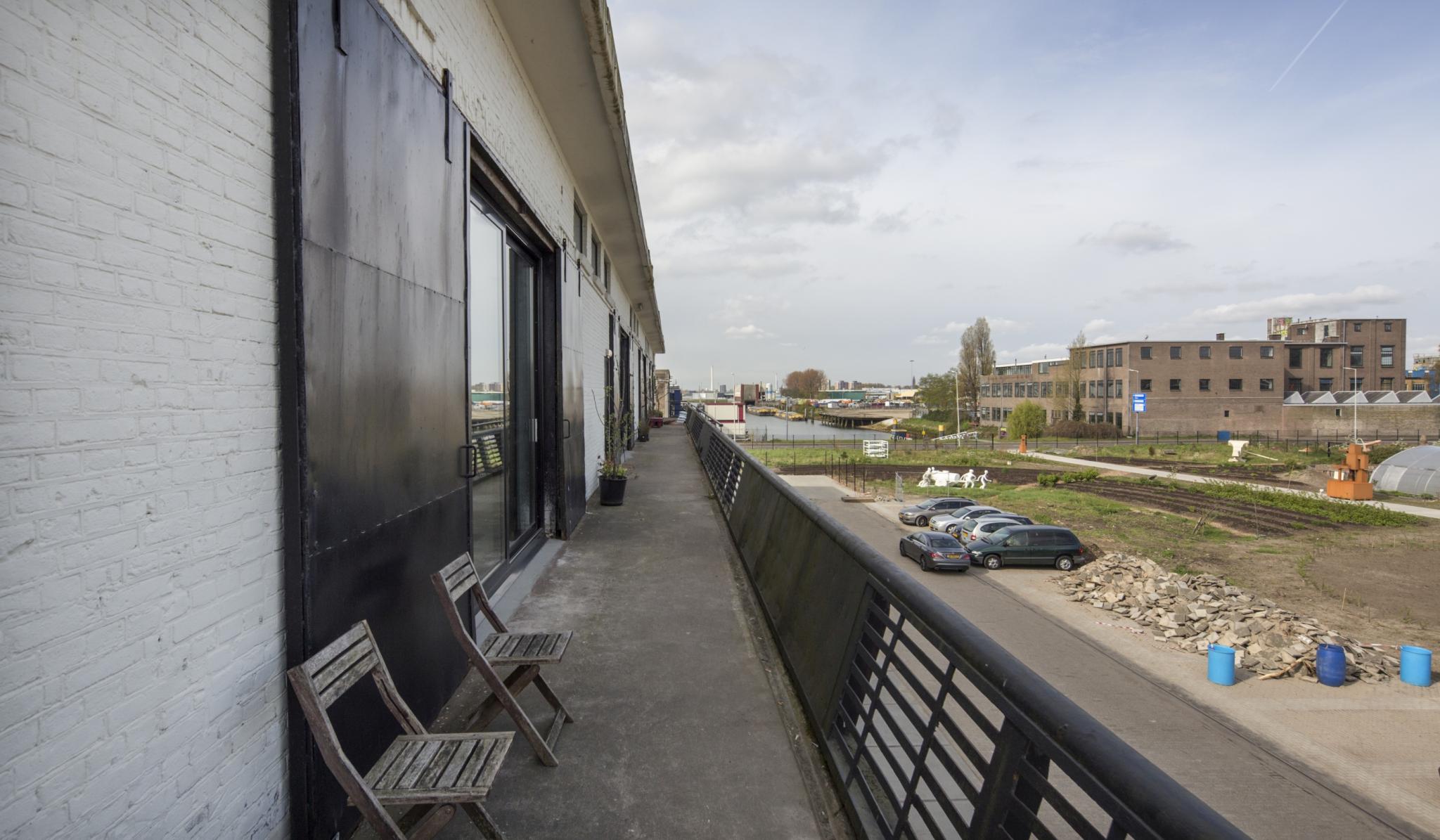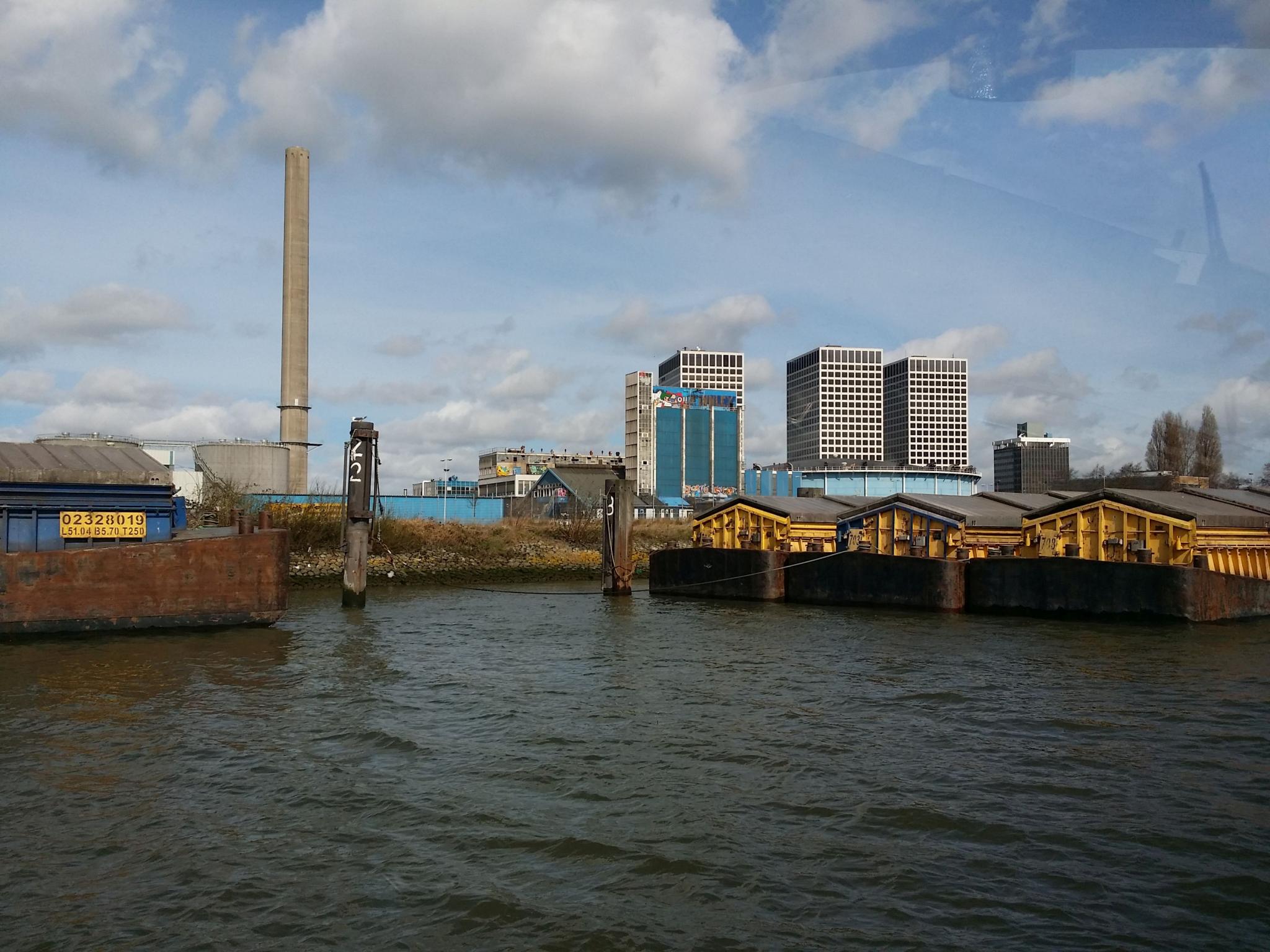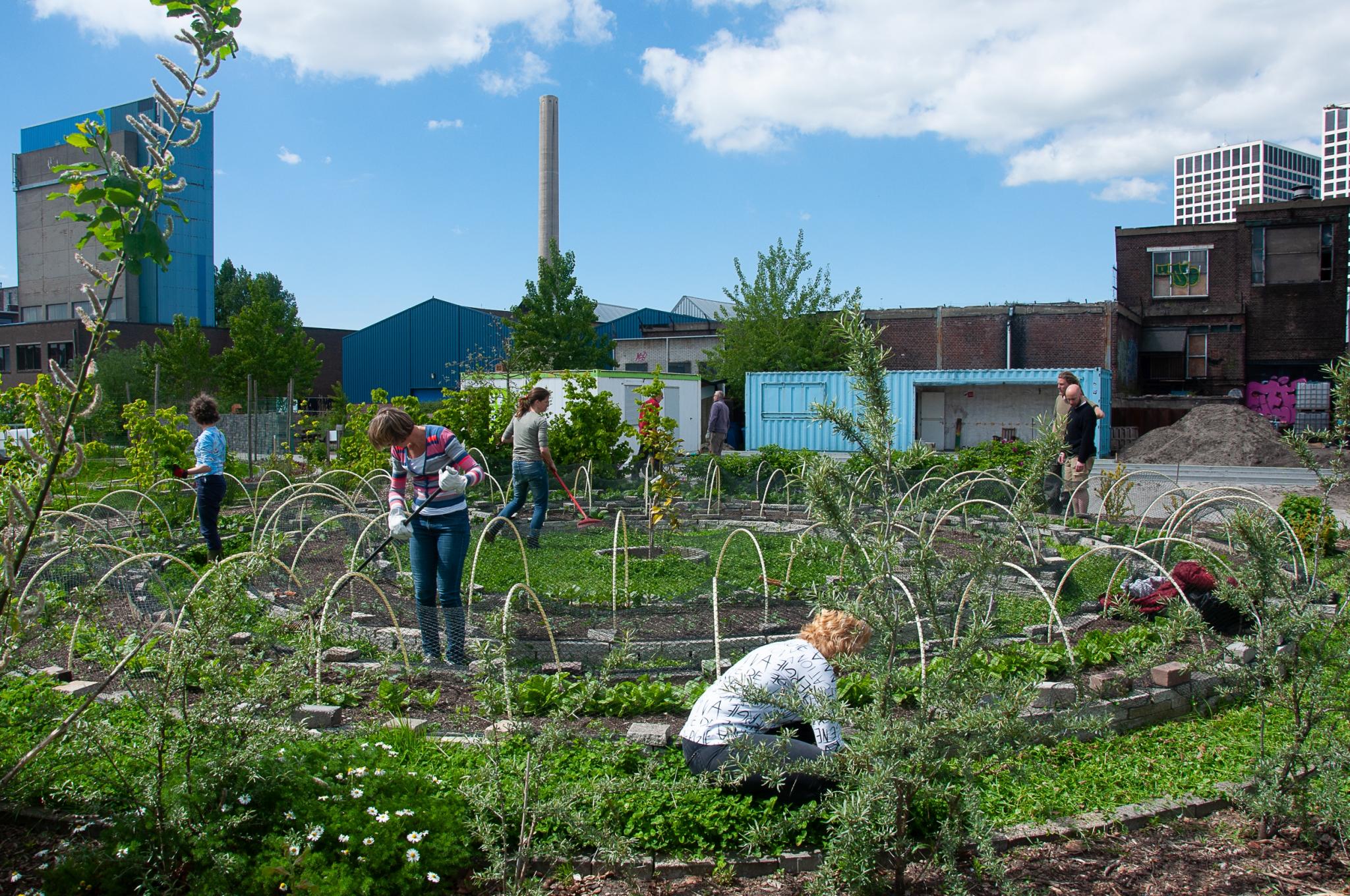David ter Avest
For decades, Rotterdam has been transforming its redundant port areas after harbour activities shifted west. At the same time, the increasing attention to social inequality in urban planning worldwide, inclusiveness has become an issue within (former) port developments. David ter Avest, researcher at the Rotterdam University of Applied Sciences, analyzes current developments in Rotterdam and argues that a socially inclusive port city model needs to connect with local city dynamics and add value to the urban surroundings.
The Merwe-Vierhaven area - in policy and marketing often referred to as ‘M4H’ - is one of the last working port areas near the city center. Established around 1910, it recently has began a process of transition from a maritime to urban functions. The size of the area is massive for Dutch standards: it is as big as the city center of Rotterdam. For a long time, the city government and port autority considered transforming the entire area through a public-private partnership (under the adage of “port out, city in”) like Rotterdam’s first waterfrond regeneration project Kop van Zuid. Inspired by innovation and economic renewal, they have collectively chosen a port-city approach, resulting in a more organic area development where the port meets the city. As a result of these plans developed jointly by port and city, the Merwe-Vierhavens area is projected to become a vibrant innovation district with a special focus on the creative manufacturing industry.
This port-city approach and the process of transition have paved the way for many bottom-up initiatives, pioneers and entrepreneurs to explore this future urban district and generating the wildest plans and ideas like art zones, museums, nightclubs, floating houses, a ‘Dutch Windwheel’ and a world expo. Yet, there are also concerns among this group of enthusiasts and among local citizens, according to a series of interviews (Ter Avest 2021). They worry the most about the residential function of this area and the possible dominance of high-end housing, instead of the creation of an area with a vibrant spatial blend of port and urban use.

As in most urban parts of the Netherlands, pressure on the housing market is high in Rotterdam. Square meter prices still increase, outbidding house prices seems required and dwellings are becoming investment objects (Groenendijk 2021). The spatial framework for M4H projects 3400 to 5100 new homes up to 2035 (Toekomst in de Maak, 2019). The current municipal building policy focuses on building for the middle and upper class; 80% of all new homes to be precise (Coalitieakkoord 2018). With the tense housing market and the small share of affordable housing questions arise like: who can afford living in the Merwe-Vierhavens? This questions the social inclusiveness of the future development plans and challenges the current port-city model to include and ensure social inclusiveness.
In order to achieve a socially inclusive development in port cities generally, three important aspects must be considered, these are also important for the future of M4H: first, provide time to stick to long-term plans; second, maintain ‘empty’ space for future development and third, establish physical and social access to the area.

Time - With the current pressure on the housing market, the risk is that quick short-term plans respond primarily to current needs rather than future ones. To suppress and control short-term real estate development and prevent short-term profit taking, port and city should plan for the long-term. Recent statistics (M4H in Cijfers, 2019) show that the balance between port-related companies and the concentration of the creative industry in M4H is slowly changing in favor of the creative, manufacturing industry. A welcome coincidence is that many ‘old’ port companies have long term contracts with the Rotterdam Port Authority. Those contracts partly determine the speed of development (Páges Sánchez 2016) and some piers will continue to have port-related activities for up to ten years. The length of port-activity related contracts thus slows down the development itself, offering the opportunity for port and city to anticipate and adjust the inclusiveness of the area over a longer period of time.
Space - Space is key for the development of a vibrant urban district, as the M4H wants to be: a district that pioneers with art, cultural expressions and social initiatives. The area owes this to its very first ‘residents’ like sculptor Joep van Lieshout. Van Lieshout, among others, basically discovered the port area back in the eighties, maintained its raw character – in line with his art-work exploring utopian and dystopian futures for humanity - and paved the way for the port development plans we know today (Meijer & Peek 2015).
One of the features that characterizes the current dynamics of M4H is the number of small-scale entrepreneurs, often established in self-organized collective offices (Jansen, Brandellero & van Houwelingen 2021). They work in close-knit communities, where sharing knowledge and co-working is business as usual. It is essential to preserve such space for the local makers and entrepreneurs, and for the unique value they add to the area and the local economy. This can already be done at the drawing-board stage, for example by pointing out 'empty spots' in the area, or by including a certain percentage of 'blank spots' in a zoning plan: spaces that are reserved for citizen initiatives of the surroundings neighborhoods, or that remain ‘permanent temporary’.

Access - Real estate agencies, developers and investors are looking with great interest to M4H as a future city district that is yet to be developed. But what kind of city district will it be, and for whom? It is essential to address the importance of accessibility: access to the development process itself as well as physical access to the area. This is of particular importance in relation to the surrounding neighbourhoods. They were once built in favor of the port industry, but the withdrawal of the port activities has weakened the mutual ties. Nowadays, the surrounding neighbourhoods are underprivileged areas with multiple social problems. A huge contrast with the future M4H area is lurking.
Both the institutional as the physical access are essential to ensure inclusive development. Institutional access can be realized by, for example, transparent information online, by setting up a visitor center and by placing big signboards wherever developments are proposed. This includes a continuing public deliberation on the future of the area, potentially fueled by present pioneers such as Joep van Lieshout. Public space has an important role to play in making the area physically accessible. First, space for pedestrians and cyclists, keeping it the Dutch way. Second, there is an important role for water. As in many port developments worldwide, an accessible waterfront, preferably with a recreational function, is essential to become a real port city area. The waterfront could become the connecting element to reestablish the relation between the residents of the surrounding neighborhoods and the renewed Merwe-Vierhavens area.
These three concepts - time, space and access – can serve as mnemonic devices in future discussions to achieve new port-city districts that takes shared values of all users into account. They are essential to accomplish an social inclusive development with mutual benefits such as between the future M4H and the surrounding neighbourhoods. Slow is the way to face the anticipated building boom and to turn the area into a characteristic Rotterdam neighborhood: with ample space, offering each city dweller access to the Rotterdam waterfront.
Acknowledgement
David ter Avest is an urban geographer, lecturer and researches the Merwe-Vierhaven area. He works for both the Rotterdam and the Inholland University of Applied Science. This blog was peer-revied by members of the PortCityFutures community, and edited by the PortCityFutures editorial team: Carola Hein and Hilde Sennema.
References
Coalitieakkoord (2018). Coalitieakkoord 2018-2022. Nieuwe energie voor Rotterdam. Municipal government agreement, June 2018
Groenendijk, P. (2021). “Amsterdamse beleggers duiken massaal op in Rotterdam: ‘Ineens was de hele straat van een Amsterdammer’”, Algemeen Dagblad, June 12, 2021
Jansen, M., Brandellero, A., & van Houwelingen, R. (2021). Port-City Transition: Past and Emerging Socio-Spatial Imaginaries and Uses in Rotterdam’s Makers District. Urban Planning, 6(3), 166-180
M4H in Cijfers (2019). Monitor 2019, Programmabureau M4H
Meijer, M. & Peek, G. J. (2015). Iconic end-users in M4H’s organic area development. Paper 51st ISOCARP Congress 2015
Páges Sánchez, J. M. (2016). Port-City governance. A comparative analysis in the European context. AESOP YA Conference
Ter Avest, D. (2021). Toegang tot M4H. Naar een Sociaal Raamwerk voor een nieuwe stadswijk. Hogeschool Rotterdam
Toekomst in de Maak (2019). Ruimtelijk raamwerk Merwe-Vierhavens Rotterdam. Policy Document, June 2019
